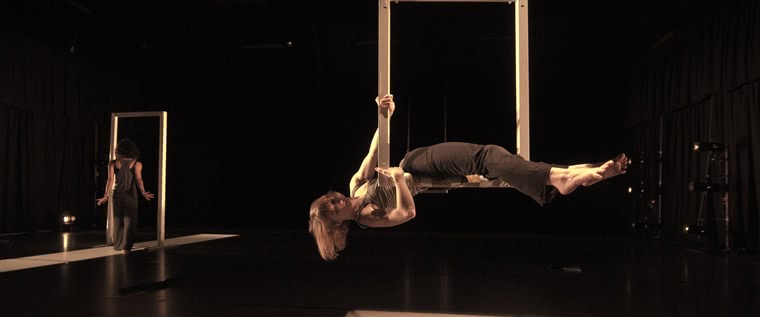Highly acclaimed choreographer Narelle Benjamin has created a new feature-length dance piece that will undoubtedly set hearts aflutter at Carriageworks this month. TitledHiding In Plain Sight, the story is inspired by the evocative work of American photographer Francesca Woodman and the philosophical writings of Romania’s Mircea Eliade.
The show consists of two solo dance pieces which are performed in the same space, but during separate overlapping timelines. One of the performers, Helpmann Award winner Kristina Chan, talks about the show and the themes it explores.
“Hiding In Plain Sight is an exploration of beginnings and endings, life and death and identity in relation to the roots of who you are and where you’re from,” she explains. “It’s also ambiguous, because I don’t think Narelle, the director and choreographer, wants to be literal about the themes. She just wants to create a sense of home and identity, just touching on it so the audience can take what they want from it.”
Despite the purposeful ambiguity of the piece, one theme that undoubtedly shines through is the idea of life being transient. Considering that dance and theatre in general is also momentary, this makes the medium quite apt.
“Live performance is particularly ephemeral. One moment you’re there and then you’re gone. The themes that Narelle works with really support the notions of being ephemeral, mortality, who we are, and what our identity is,” says Chan. “There are a few scenes that we’re working with. We’re still in the process of finishing the little scenes that will pull into the one core idea: home and identity.”
Audience members can also look forward to watching a creatively unique show, particularly due to the specific choreography developed by Benjamin.
“I’ve worked with Narelle for years, so we have quite a strong creative relationship,” says Chan. “She works quite differently to how most choreographers work these days. Generally, dance theatre is highly collaborative, and although Narelle does work in a collaborative sense, she also brings in her very highly tuned choreographic vocabulary in her body that she’s developed over many years.
“In one sense it’s challenging, because you’re almost learning a new physical technique. I love the challenges of working with different directors, and it’s great bringing your own sense of movement to a work. But then sometimes you just end up finding yourself doing what you’d normally do. Comparatively, Narelle really has a specific choreographic language and she employs that in her work.”
Another fascinating aspect of Hiding In Plain Sight is the way the material it was inspired by informs the performance of the dancers themselves. They’re involved in the process before they reach rehearsals.
“I’m loving the research aspect more and more,” Chan says. “You can saturate yourself with imagery, writing or whatever the research is, which is going to hopefully filter through physically somehow. The more you saturate yourself in that world, the more likely it is that it will come out. I particularly relate to images more so than writing, although in saying that, writing can create imagery in my mind. I guess because dance is such a highly visual thing, you can create really abstract images that aren’t the norm through manipulating the body.”
Hiding In Plain Sight as part of Performance Space: Score showing atCarriageworks fromFriday August 22 to Saturday August 30, tickets online.



































